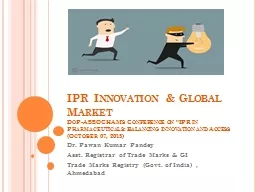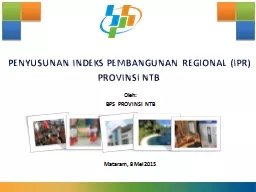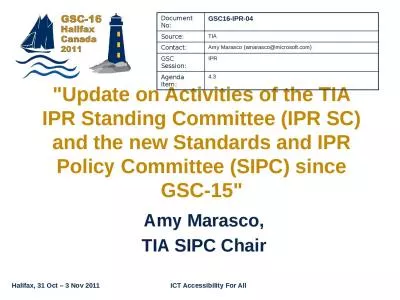PPT-IPR Innovation & Global Market
Author : tawny-fly | Published Date : 2017-01-19
DoPASSOCHAMs Conference on IPR in Pharmaceuticals Balancing Innovation and Access October 07 2015 Dr Pawan Kumar Pandey Asst Registrar of Trade Marks amp GI Trade
Presentation Embed Code
Download Presentation
Download Presentation The PPT/PDF document "IPR Innovation & Global Market" is the property of its rightful owner. Permission is granted to download and print the materials on this website for personal, non-commercial use only, and to display it on your personal computer provided you do not modify the materials and that you retain all copyright notices contained in the materials. By downloading content from our website, you accept the terms of this agreement.
IPR Innovation & Global Market: Transcript
Download Rules Of Document
"IPR Innovation & Global Market"The content belongs to its owner. You may download and print it for personal use, without modification, and keep all copyright notices. By downloading, you agree to these terms.
Related Documents














